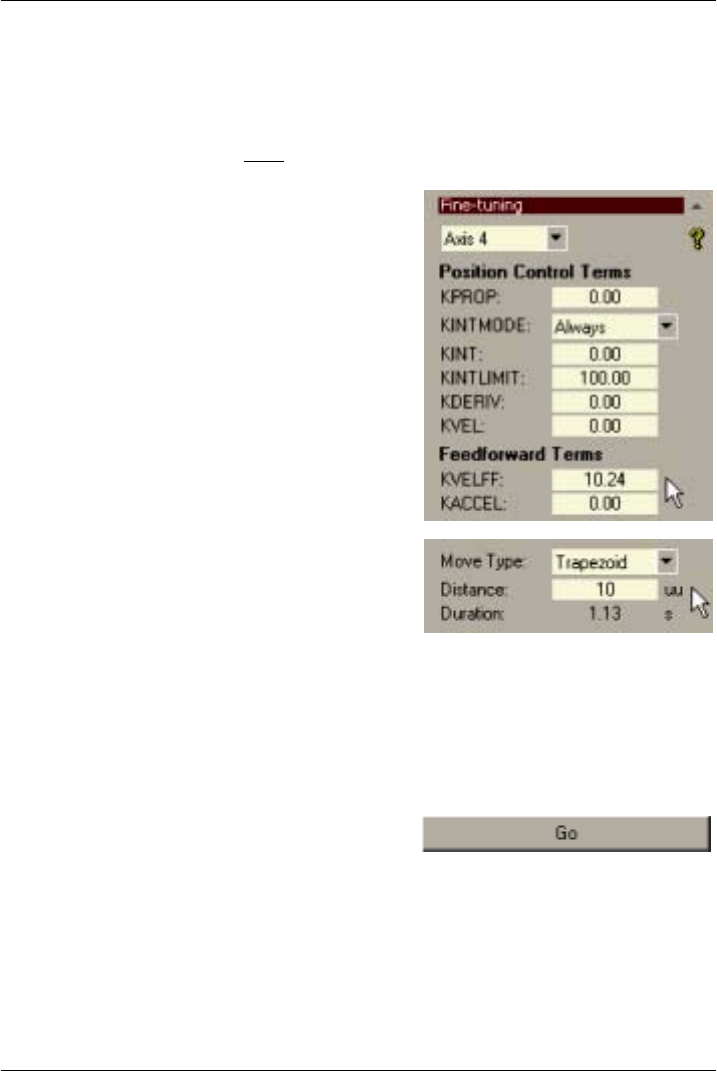
Operation 6-23MN1928
The analog demand output is controlled by a 12-bit DAC, which can create output voltages in
the range -10V to +10V. This means a maximum output of +10V corresponds to a DAC value
of 2048. The value of KVELFF is calculated by dividing 2048 by the number of quadrature
counts per servo loop, so:
KVELFF = 2048 / 200
=
10.24
5. Click in the KVELFFbox and enter the value.
The calculated value should give zero
following error at constant velocity. Using
values greater than the calculated value will
cause the controller to have a following
error ahead of the desired position. Using
values less than the calculated value will
cause the controller to have following error
behind the desired position.
6. In the Move Type drop down box, check that
the move type is set to Trapezoid.
7. Click i ntheDistance boxand enter adistance
for the step move. It is recommended to set
a value that will cause the motor to m ake a
few revolutions, for example 10.
Note: The distance depends on the scale set in section 6.3.1. If you set a scale so that
units could be expressed in revolutions (or other unit of your choice), then those
are the units that will be used here. If you did not set a scale, the amount you
enter will be in encoder counts.
8. Click Go.
The NextMove ES will perform the move and the motor will turn. As the soon as the move
is completed, WorkBench v5 will upload captured data from the NextMove ES. The data
will then be displayed in the Capture window as a graph.
Note: The graph that you see will not look exactly the same as the graph shown here!
Remember that each motor has a different response.


















